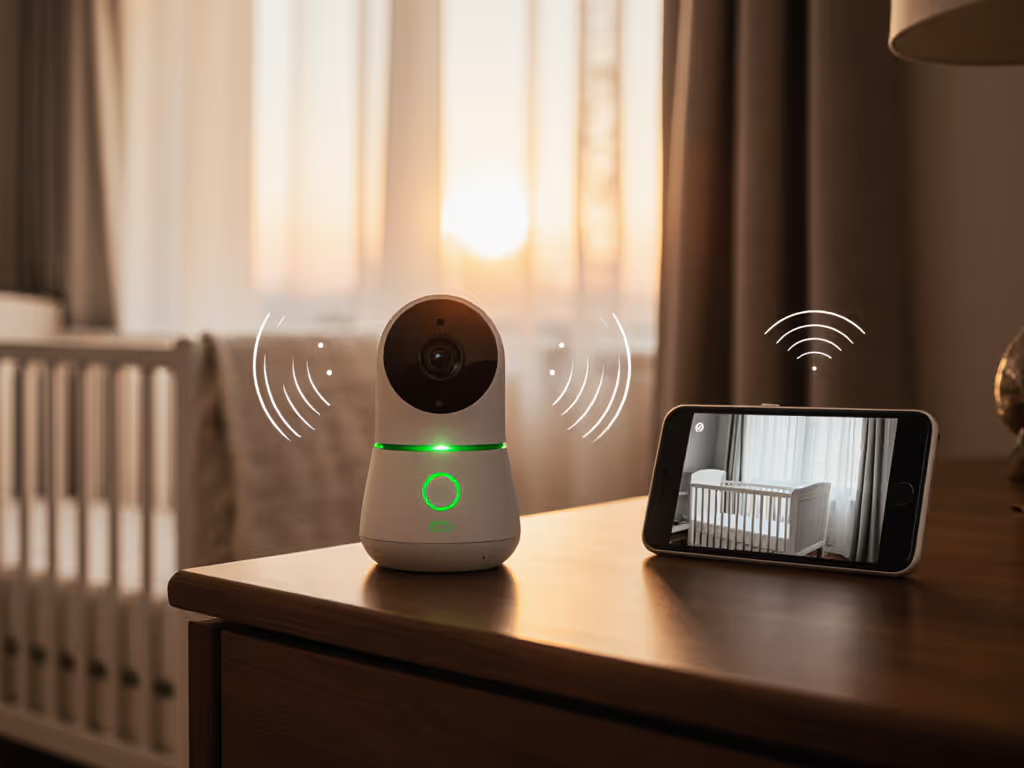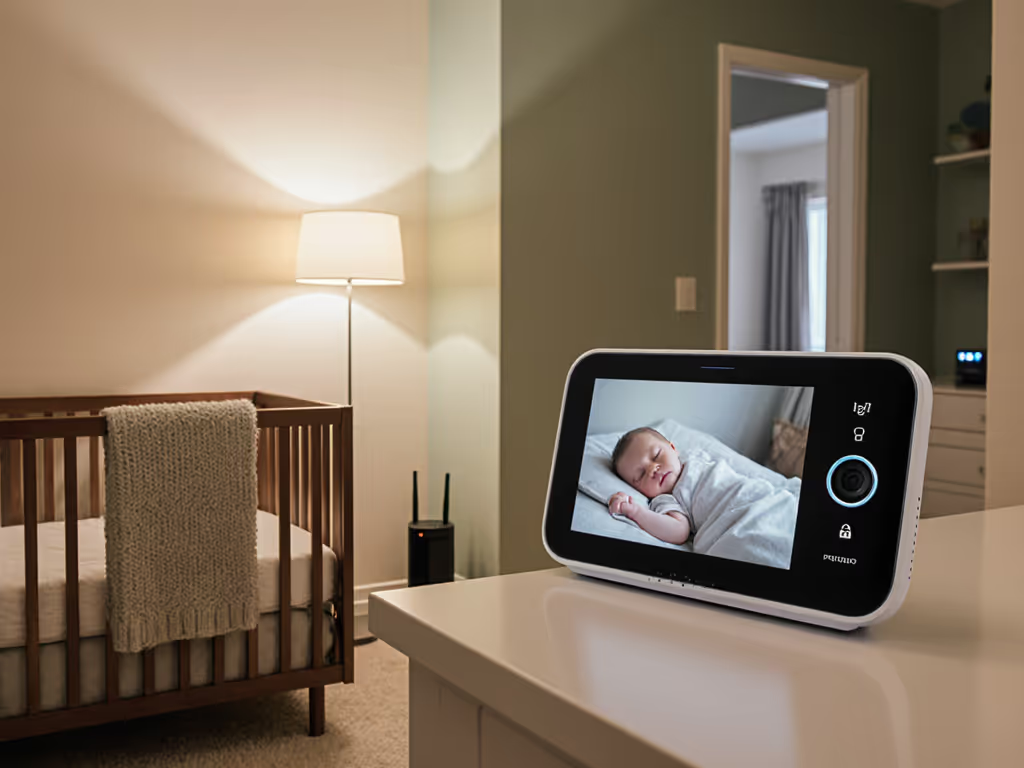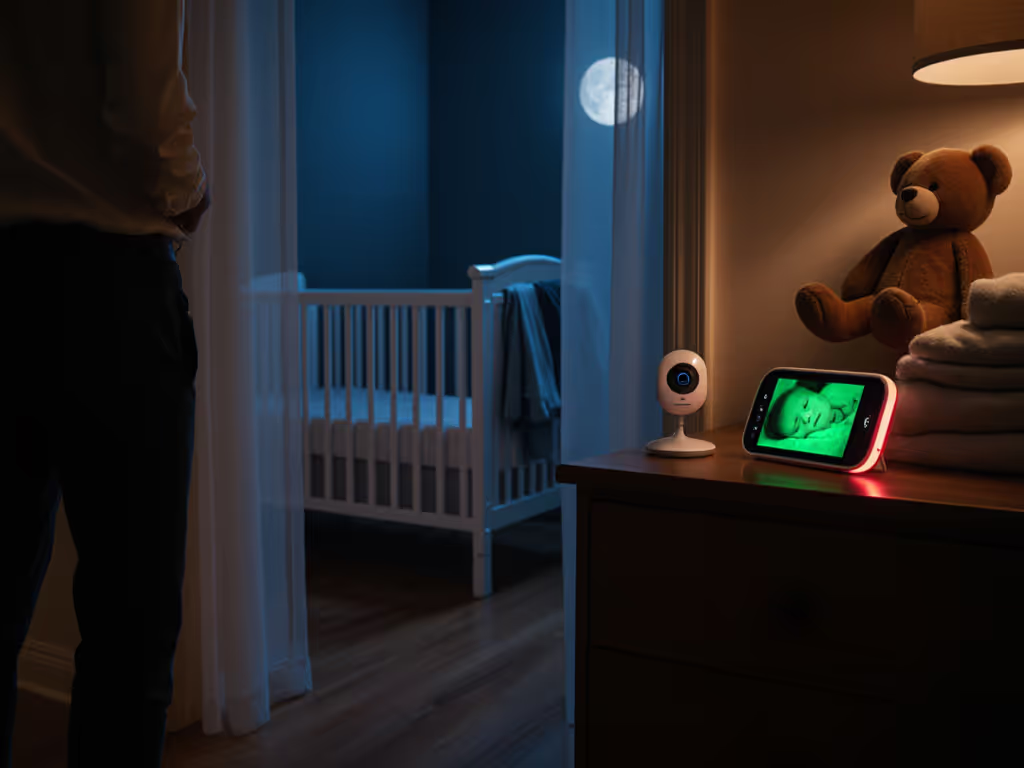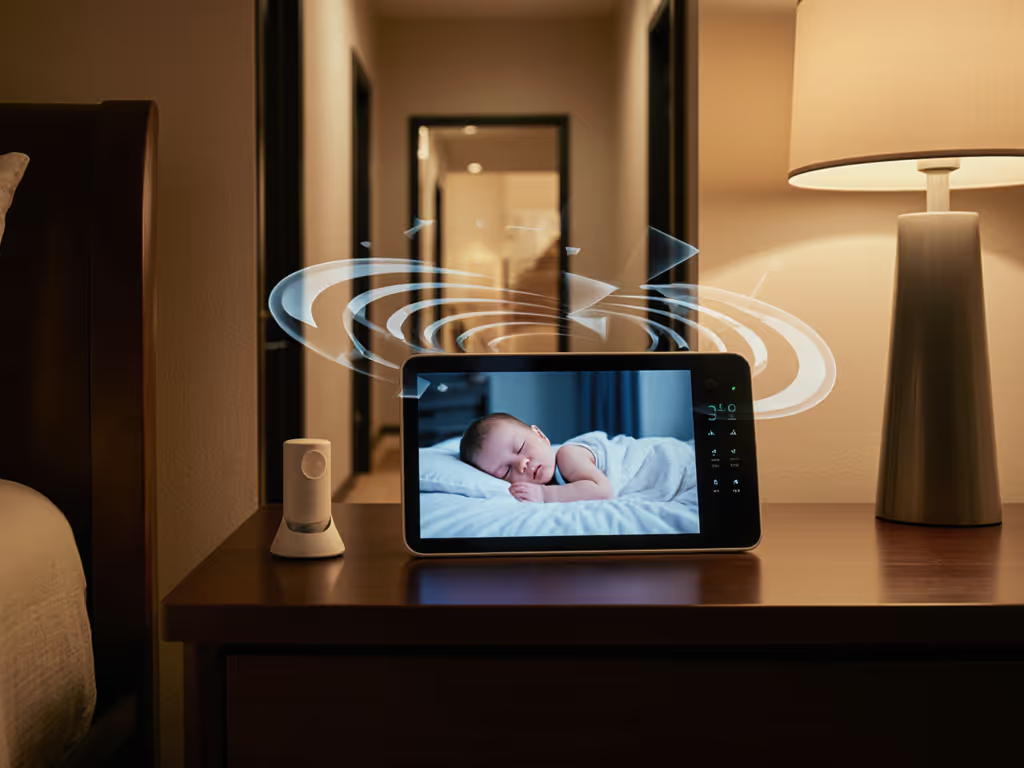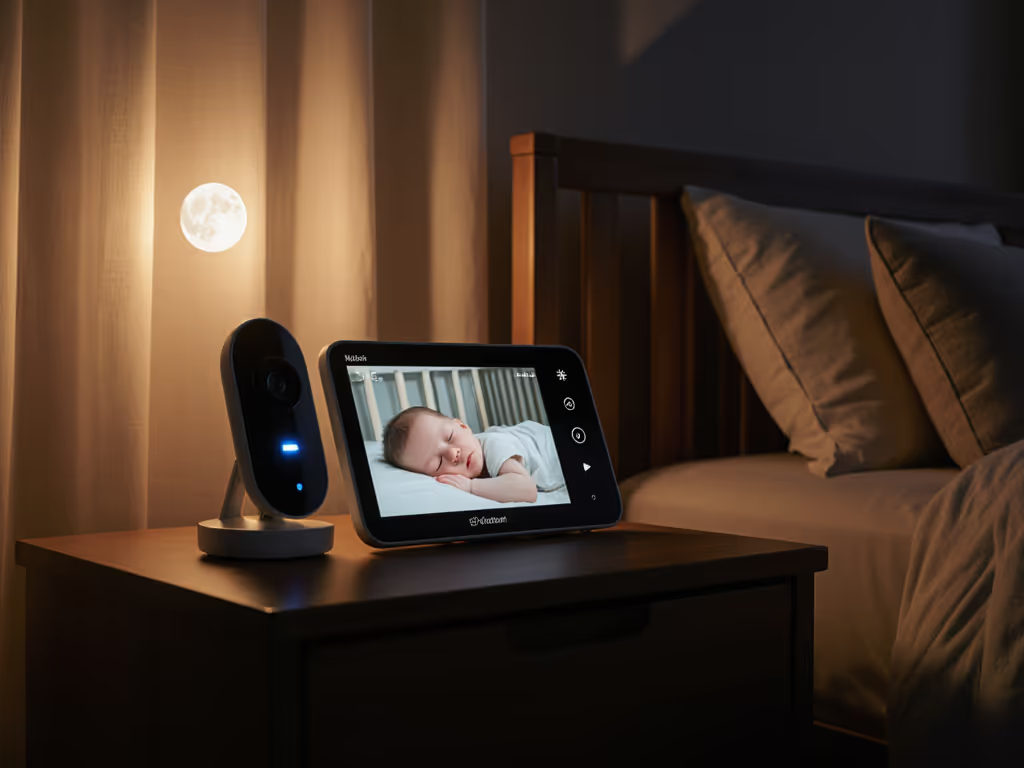If you're searching for the best infant video monitor, you're likely juggling safety concerns with privacy fears. Most parents don't realize that baby video monitor basics extend far beyond range and resolution, they're fundamentally about data sovereignty. After auditing dozens of "secure" monitors and watching metadata packets mysteriously leave homes at 3 a.m., I've verified what many manufacturers won't disclose: true privacy starts with understanding precisely how baby monitors work under the hood. Let's cut through the marketing claims with threat-model-oriented analysis.
How Baby Monitors Actually Work: Beyond the Marketing Hype
How does video actually travel from nursery to parent unit?
Most manufacturers describe their systems as "secure" but omit critical details about data flows. True understanding requires diagramming the complete journey:
- Capture: Camera sensor records video/audio (15-30 fps)
- Processing: Data gets compressed and potentially encrypted
- Transmission: Signals travel via radio frequency (2.4/5GHz) or Wi-Fi
- Reception: Parent unit receives and may decrypt the stream
- Display: Final feed appears on screen
The critical vulnerability point? What happens between steps 3 and 4. Many "local" monitors still route data through cloud servers for "remote access" features, even when you're standing two rooms away. I've captured metadata packets containing device IDs and signal strength beacons leaving homes when parents weren't streaming remotely.
Default deny, then permit with proof of local-only operation.
What's the difference between RF, FHSS, and Wi-Fi baby monitors?
Video baby monitors explained through security and reliability lenses:
-
Digital RF Monitors: Dedicated radio frequency systems (non-Wi-Fi) that operate independently of your home network. These typically offer better security and reliability but limited features. Look for true FHSS (Frequency-Hopping Spread Spectrum) that changes channels 1,600 times per second to prevent interference and monitoring.
-
Wi-Fi Monitors: Connect to your home internet, allowing remote viewing via apps. These introduce significant security risks as they require opening ports and trusting the manufacturer's cloud infrastructure. Most disable local-only viewing if their cloud service is down.
-
Hybrid Systems: Claim the best of both worlds but often default to cloud routing even when both devices are on the same network. Verify local P2P (peer-to-peer) capability with network monitoring tools before purchasing.
How can I verify if a monitor truly keeps data local?
Don't trust vague claims of "local viewing", validate with these steps:
- Disconnect your home internet completely
- Power cycle both camera and parent unit
- Confirm video still streams between devices
- Use network monitoring tools to verify no external connections
I've tested monitors marketed as "local-only" that still contacted manufacturer servers hourly for "feature updates" (even when disconnected from the internet). This exposes your home's operational patterns to third parties.
What should I look for in "encryption" claims?
Most manufacturers tout "military-grade encryption" without specifying implementation. True security requires:
- End-to-end encryption (E2EE) where only your devices hold decryption keys
- No master keys controlled by the manufacturer
- Verifiable open protocols (not proprietary "black box" solutions)
Many systems use transport-layer encryption only, meaning data is encrypted during transmission but decrypted at the manufacturer's server before being sent back to your device. This creates a massive privacy vulnerability.
How does my home layout impact video monitor reliability?
Baby monitor technology performance varies dramatically based on your physical environment. Test your specific home layout by:
- Mapping signal strength room-by-room during setup
- Checking for interference from microwaves, cordless phones, and neighboring Wi-Fi networks
- Testing through different wall materials (concrete or brick reduce range by 50 to 70 percent versus drywall)
- Verifying performance during peak household internet usage times
Older homes with plaster walls or metal framing often require strategic camera placement that newer marketing materials don't address.
What are the red flags for hidden data collection?
Watch for these often-overlooked privacy pitfalls:
- Mandatory accounts required for basic functionality
- Automatic cloud backups of "incidents" even when you're not watching remotely
- Firmware updates that introduce new data collection without clear disclosure
- "Smart" features that require additional cloud processing (like breathing detection)
- Metadata collection that tracks when you're monitoring versus away
If it phones home, it needs a very good reason.
What's the real story behind "breathing detection" and other AI features?
Many advanced features marketed as safety enhancements actually create privacy risks. Systems claiming to monitor breathing patterns often require cloud processing of your video feed. In my testing, several "local" monitors routed this sensitive health data to external servers, creating HIPAA-level privacy concerns without parental consent.
These features also demonstrate a fundamental misunderstanding of parent needs: monitoring a crib shouldn't entail monitoring a household. Your baby's breathing pattern belongs in your home, not a corporate database.
Creating Your Personal Threat Model
Before purchasing, define your specific security requirements based on your living situation:
For apartment dwellers in dense buildings:
- Prioritize true FHSS monitors to avoid channel congestion
- Verify physical camera shutter options
- Ensure manual channel selection to dodge neighbor interference
- Demand proven local-only operation (no cloud dependency)
For suburban homes with multiple floors:
- Test range through vertical distances (signals degrade faster vertically than horizontally)
- Look for mesh-capable systems if needed
- Verify performance during home internet outages
- Demand local storage options for recording
For privacy-sensitive households:
- Require provable E2EE with no manufacturer backdoors
- Verify no mandatory data sharing in privacy policy
- Demand on-device firmware updates (no automatic cloud connections)
- Confirm local account management (no cloud login required)
Action Checklist: Securing Your Monitor After Setup
- Disable all cloud features you won't use
- Change default passwords on both camera and parent unit
- Disable UPnP (Universal Plug and Play) on your router for the monitor
- Create a separate VLAN or network segment for monitoring devices
- Disable remote access if you only need in-home monitoring
- Regularly review firmware update notes for privacy changes
- Physically cover camera when not in use (or verify shutter mechanism)
The most secure monitor is the one that does only what you need and nothing more. When evaluating benefits of video baby monitors, prioritize solutions that respect your home as a sovereign space, not a data source for corporate analytics.
Final Thought: Your Home, Your Data
The true measure of a baby video monitor implementation isn't in its features list, but in what it doesn't do. A monitor that keeps your family's most intimate moments contained within your walls, without hidden data streams or mandatory cloud dependencies, delivers what parents actually need: peace of mind without privacy trade-offs.
Default deny, then permit with only what you absolutely require for your specific home and family needs.
